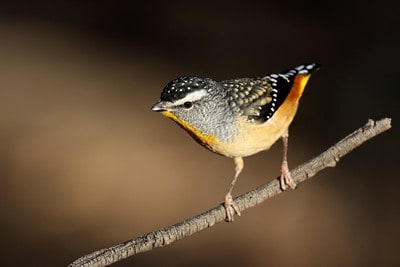TASK 3:
Inspire a national commitment to threat abatement
Australians have inherited an astonishing natural legacy. Hosting some 8% of the planet’s species, we are one of 17 ‘megadiverse’ countries and most of our species are found nowhere else. Many Australians want to save threatened species, but the public focus has mainly been on protecting iconic species rather than abating the major threats they have in common.
Fundamental to achieving more effective national action is an agreement committing our federal, state and territory governments to collaborate on abating the major threats to nature. We need an integrated national approach for managing threats – one that cuts across state and federal programs and different sectors

Many Australians already contribute to threat abatement – restoring bushland, weeding and managing feral animals and fire. But without nationally led coordination, these efforts are inevitably only piecemeal. We need a national vision about what Australia can achieve through systematic threat abatement— implemented through dynamic intergovernmental and community partnerships.
Australia was an innovator when we first created our national threat abatement system 30 years ago (under the Endangered Species Protection Act 1992). With most threats to nature worsening, we need that ambition and spirit of innovation now more than ever.
Our First Australians have been the ultimate innovators in this country, continuously adapting and solving problems to endure and flourish, often in very harsh conditions, over more than 2,000 human generations. In particular, they have demonstrated the importance of cultural innovation, placing country at the centre of their lives, and shaping their values and practices to fit country and keep it healthy. Here for less than 10 generations, the new Australians have much yet to learn.
The following changes are needed to inspire the national collaborations and institutional arrangements needed for effective threat abatement.
1
Develop an intergovernmental agreement that commits the Australian, state and territory governments to collaboratively abate major threats to nature
The issues facing our community and economy are complex and constantly evolving. They require our ministers to come to the table in the spirit of cooperative and responsible federalism – engaging in discussion informed by a diversity of jurisdictional perspectives but ultimately in pursuit of our collective national interest.
Review of COAG Councils and Ministerial Forums (2020)
Australia needs an intergovernmental agreement – as is the case for other sectors such as biosecurity, health and education – that commits each government to collaboratively and systematically abate major threats to nature and recover threatened biodiversity. One possibility is to refresh the climate change or biodiversity schedules of the 30-year-old Intergovernmental Agreement on the Environment. Effective government partnerships will need to be underpinned by a funding agreement. Only by contributing substantial funding is the Australian Government likely to motivate and enable state and territory governments to undertake comprehensive abatement programs. This is consistent with funding arrangements for other sectors.
2
Facilitate national collaborations by governments, Traditional Owners and community and cross-sectoral stakeholders on abating threats to nature
Meaningful involvement of community stakeholders, including Traditional Owners, is widely recognised as essential for effective conservation programs. Many threats to biodiversity are also threats to industries such as agriculture and tourism and to human amenity or health. Partnerships with non-environmental beneficiaries of threat abatement will increase resources and public support for threat abatement.
3
Introduce independent oversight of the national threat abatement system.
state and territory governments in meeting Australia’s international and national responsibilities for biodiversity conservation, including the identification and abatement of major threats. The position could be a parliamentary commissioner (as in New Zealand) or an inspector-general (as for federal biosecurity in Australia).
4
Set ambitious and inspiring goals for abating Australia’s major threats to nature
Threat abatement should be regarded as an important collaborative mission of Australian governments and communities. To inspire Australians, we need ambitious threat abatement goals that convey a vision of what can be achieved by systematic threat abatement and that there is a role for everyone. An example of this is New Zealand’s Predator Free 2050 program, which has strong community and government backing to eradicate invasive predators by mid-century. The social sciences will be essential to designing effective abatement programs.












